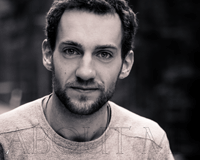Since I have the honour to be this week's guest judge of the SteemitPhotoChallenge, I looked at- and rated all entries to the challenge up until now. I am seeing one thing over and over again that I feel like needs to be addressed.

There are so many beautiful pictures with great potential. Many of you visited the most astonishing places or are even lucky enough to live near one of those places. The pictures are taken well and the composition is on point. Some of those pictures could have made it to the top of my list if it wasn't for one thing: The picture wasn't edited.
For some of you, editing might seem like cheating, and I absolutely get where you are coming from. But there is at least one good reason to do some basic editing. The dynamic range of a human eye is greater than that of an SLR camera and much greater than that of a phone camera. For example, my Canon 600D has a dynamic range of about 9 f-stops, but the human eye can see anywhere between 10 and 14 f-stops without dynamically adjusting the brightness. On top of that, our eyes can dynamically adjust the brightness "on-the-go" by changing the pupil size, which gives us a dynamic range exceeding 24 f-stops. If that doesn't sound like much to you, I don't want you to forget that f-stops describe the dynamic range in powers of two.
Especially for landscapes, where there is usually a very high dynamic range, pictures simply won't look the way you see them with your eyes without editing.
The procedure is easy: Decrease the highlights and increase the shadows of you picture, so that it almost looks a bit HDR-Like (Please don't go for an HDR-Look. That hype train is far gone.). Then adjust the black and white points, so that the entire color spectrum is used without compromising details to entirely black or white pixels. The increase in dynamic range will be drastic but it will still look natural. To show what I mean, here is a before and after comparison of a pretty bad picture that I took for this challenge:
You don't even need to use expensive software for this. There are many free mobile apps and the image viewers on Mac and Windows do also have these features.
If you are using a better program like Adobe Lightroom or Photoshop, you can use the "dodge" and "burn" tools to create artificial highlights and shadows which makes it feel like the dynamic range is even more realistic. This is the result I got with the basic editing that Lightroom has to offer:


Here's a picture I took from the Red Sea in Egypt using the dynamic range editing technique as shown:

Some last words
Be careful with editing software. It is easy to get lost in all the options that Lightroom has to offer and to over edit the picture. Use the history panel every now and then to go back a couple of steps and to see if you've really made your picture look nicer. A good way is to try to recall the emotions you had when taking the picture and see if you're feeling the same emotions when looking at the edited picture.
Shoot in RAW format. Using the clunky RAW format might be a bit of a pain because of the large files and the increased processing power needed to edit the pictures, but the JPEG standard only uses 8 bit per color channel whereas most RAW formats use 14 bit per color channel. That means that 14 bit provides 16,384 levels per channel and 8 bit only provides 256 levels per channel. That's 64 times less bit-depth than RAW.
This is not a rant of any kind. As I said, there have been so many breathtaking pictures. There were just some pictures that had a lot of potential but simply couldn't keep up with the edited pictures. I want to encourage those ones to make the pictures look even nicer without feeling bad because of "cheating". The point is that editing isn't necessarily cheating, it's just a way to make the picture look the way it looked irl, which for me is totally valid.
Many of you already know everything about editing and are way better at it than I am. If you have any corrections or further suggestions, please feel free to discuss it down below!





Yup, very good reminder.
Small things can really enhance the look and feel of the photo, and make it more true to life.
I usually have a flat profile in camera so that I have more control in post.
Totally agreed.
If we want to make a parallel with argentix photography (films, ...) We have to take note that they do the process in dark room to have less highlights by under developing certain parts and vice versa for the shadows. These processes are certainly easyer with a software like Lightroom but it shows that's it's not cheating... It's quicker and you can reverse the action.
The fact that the contests in the famous National Geography magazine allows some editing with Lightroom, convinced me finally that if you want professionnal captures, you need to post-edit.
Some pros use filters to do the job before that. For shure the result will be better than digital stuff... but costs soo much if you want to have all the filters you need!
We are lucky to have these opportunities theses days...
I saw amazing work taken with smartphone. A guy made an artbook with that kind of hardware (New York Times award)... so go on... I didn't expected to win the @steemitphotochallenge #6. I have only 3 years of learning photography with youtube, blogs, 1 physical book and practice so everybody can do it... (Luck ? ;))). But (and that's obvious) one thing. Technology is not what's make good creations! The idea, the knowledge, the eye and most of the time (for me) the luck ;) are the real qualities. The rest is a tool to reach what you wanna show. As @dercoco wrote: "it's just a way to make the picture look the way it looked at the time you where there." (something like that XD).
Yeah I think post-processing is just a way to stay competitive. If you look at the pictures that Samsung phones take, you'll see that they are all extremely saturated. That is Samsung's way to make their pictures look nicer than the ones of the competitors. Although most photographers despise that feature, the mainstream loves it, so Samsung adapted to it.
If dodging and burning is considered basic photo editing, Okie dokie.
Definitely, after cropping they are probably the most basic.
I shoot RAW . . . I just don't do much in the way of Photo-editing. But, this should open up a whole new world of creativity.
RAW exists for photo editing ;)